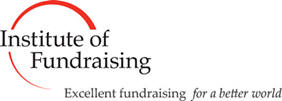 OpenBooks
OpenBooks
Methodology & Sources
In 45 years as a priest I have never been called on to give an account of my stewardship.
If I had kicked over the traces, I might well have been moved to a different parish without any request to make amends. We rightly cringe when priests are moved from parish to parish because of the crimes of child abuse.
Are we not still doing the same
with clerical nepotism?
More accountability for
bishops and priests would help the Church have
better servants and fewer dictators.
Transparency seems to have become a topic for the Catholic Church since the start of the Millennium. Transparency seems to have become a topic for the Catholic Church since the start of the Millennium.
Transparency seems to have become a topic for the Catholic Church since the start of the Millennium.
Transparency seems to have become a topic for the Catholic Church since the start of the Millennium.
Transparency seems to have become a topic for the Catholic Church since the start of the Millennium.

What’s meant
by transparency and
accountability? Here are some
helpful perspectives..

BY THE UK
INSTITUTE OF FUNDRAISING
ACCOUNTABILITY
is about being responsible to
someone for actions taken; about
being able to explain, clarify
and justify actions.

BY The Transparency &
Accountability Initiative
Standard-setting
Setting out the behaviour
expected of the ‘accountee’ and
the criteria by which they might
validly be judged.
Investigation
Exploring whether or not
accountees have met the
standards expected.
Sanction
A process in which accountees
are in some way punished for
falling below the standards
expected of them (or perhaps
rewarded for achieving or
exceeding them).

BY THE US National Roundtable on
Church Management Leadership
“Although parishes and dioceses
are private entities, they
operate in the name of the
Church in service to members and
the community at large with
support from the faithful and
the general public.
As such, all parishes and
dioceses should provide the
faithful and the public with
information about their mission,
ministry program activities, and
finances”.
Standards
for Excellence Code for the
Catholic Sector and Canon Law
booklet”
http://theleadershiproundtable.org/sfx/documents/Canon_law_commentary.pdf

BY
The Church Transparency Project